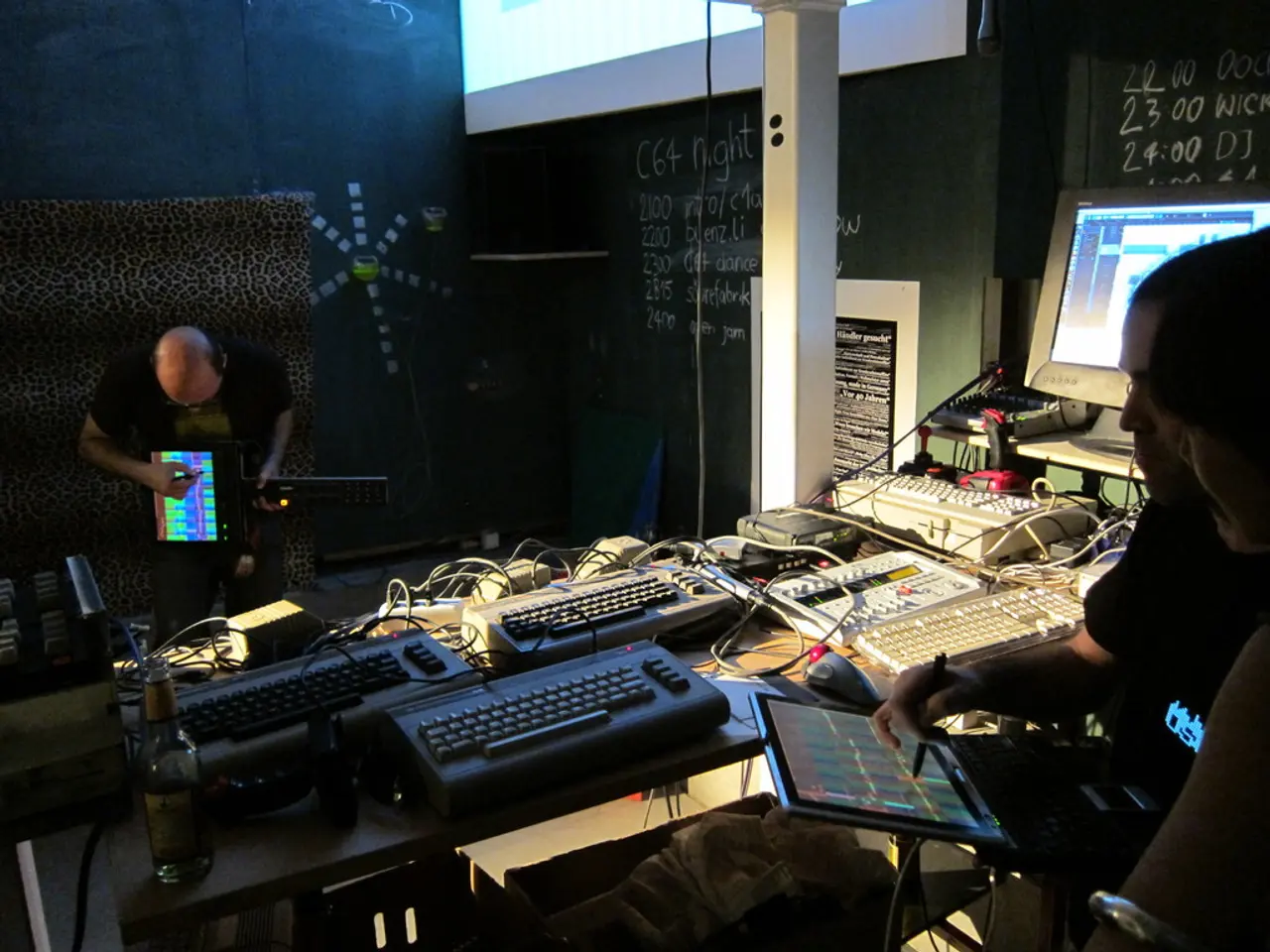Creatures Incorporating Personal Electronic Devices Within Their Biology
Revolutionary Medical Technology: In Vivo Assembly of Electronic Devices for Implants
A groundbreaking development in the field of medical technology is paving the way for a new era – the in vivo assembly of electronic devices for medical implants. This innovative approach enables the fabrication or transformation of electronic components directly inside the body or on biological tissues.
By using materials and fabrication strategies that allow electronics to change from rigid to flexible states or self-assemble into desired shapes and functions within the biological environment, devices can be minimally invasive at insertion and then adapt or complete their functional configuration internally.
One key approach involves the use of electronic inks capable of switching from a rigid state (facilitating surgical insertion) to a soft, conformable state post-implantation, reducing tissue irritation and inflammation. For example, STAR ink technology allows devices to be rigid during surgery and then soften in the body, enabling close tissue integration and stable signal transmission even under repeated strain – critical for durable neural probes or other implants.
Another approach includes assembling flexible, conformal piezoelectric arrays or circuits that can be implanted or worn, enabling targeted therapies like deep brain stimulation or noninvasive ultrasound treatments by integrating these miniaturized components directly onto tissue surfaces or within organs.
The potential benefits of in vivo assembly for medical implants in telemedicine and personalized healthcare are significant. Devices start rigid for ease of insertion and become soft and flexible inside the body, minimizing tissue damage and immune response. Electronics that adapt to the body’s shape and environment increase comfort, sensor accuracy, and long-term stability.
Real-time, continuous monitoring is another advantage, with integrated implantable and wearable devices collecting physiological data continuously, transmitting it wirelessly for remote monitoring and timely intervention via telemedicine platforms. Personalized therapies are also possible, with devices like wearable ultrasound patches providing targeted treatment modulated through intelligent interfaces for individual patients – allowing adjustments based on patient-specific responses and disease progression.
Applications in telemedicine and personalized healthcare are vast, ranging from neurological disorders like epilepsy and Parkinson’s disease, to chronic disease management, targeted drug delivery and therapy monitoring, and smart healthcare systems.
In summary, in vivo assembly enables the creation and deployment of flexible, adaptive, minimally invasive implantable electronics that can interact intimately with biological tissues. This capability significantly advances telemedicine by allowing continuous, personalized health monitoring and therapeutic interventions remotely, facilitating better chronic disease management, neurological therapies, and real-time patient care adjustments.
The use of soft, flexible materials that mimic biological tissues is a key goal in enhancing the compatibility and functionality of implanted devices. Bioelectronics could enable real-time monitoring and interaction with physiological processes. The evolving field of in vivo assembly of electronic devices holds promise for applications in telemedicine and personalized healthcare, potentially addressing challenges associated with traditional implants.
Researchers are exploring the concept of in vivo assembly of electronic devices within living organisms, aiming to integrate electronics with biological systems harmoniously. Advanced medical devices may be created that can be implanted or ingested, providing continuous health monitoring or targeted therapies. The development of these devices could potentially lead to the creation of bioelectronics that function seamlessly inside biological systems, addressing mechanical mismatches leading to tissue inflammation and scarring.
- In the realm of healthcare and biotech, researchers are pursuing the development of bioelectronics, which are designed to function seamlessly inside biological systems, a result of the revolutionary in vivo assembly of electronic devices.
- This innovative approach in the science of medical-conditions could potentially lead to the creation of advanced medical devices that not only monitor health but also deliver targeted therapies, contributing to the field of health-and-wellness.
- The integration of soft, flexible electronics into living organisms through in vivo assembly technology could pave the way for telemedicine advancements, enabling real-time, continuous monitoring and personalized therapies for a wide range of health-related challenges.




